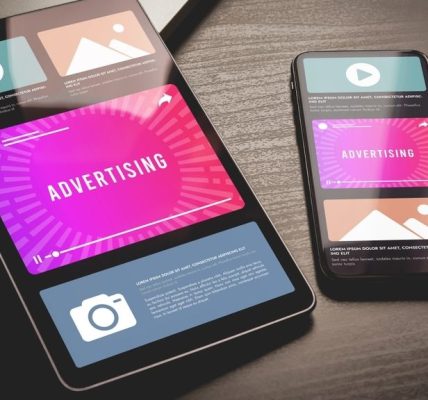Over the past month, the digital marketing industry has been buzzing with discussions about how SGE might affect Google search results.
While SGE is still in its testing phase, the nature of the interface and its visual layout have led advertisers to speculate about its potential impact on revenue and what the future might hold if it is fully implemented.
Let’s explore what SGE is, its likely impact on paid search, and what the future may look like for those involved.
What is SGE?
SGE, or “Search Generative Experience,” is Google’s new AI-driven search function. It aims to transform how search results are displayed and interacted with. SGE offers users clear and concise summaries of their search queries directly on the results page, eliminating the need to click through multiple websites. The AI processes search terms and generates informative responses, condensing key takeaways, answering questions, and even providing step-by-step instructions.
In addition to answering user queries, the interactive interface allows for follow-up questions all in one place.
The result appears at the top of the page, pushing down traditional organic listings and, in some cases, rearranging ad positions. Consequently, this rollout could significantly impact existing traffic and conversion rates.
It’s important to note that SGE is still under development and currently being tested in the US.
What Does SGE Mean for PPC?
Although SGE is in its early stages and the final product is not yet clear, there is heated discussion about its potential to reduce real estate and top ad slots, leading to increased competition and potentially higher costs.
In its current form, SGE could impact PPC in the following ways:
– Increased competition for existing ad slots if their positions change or decrease
– More competition in PPC overall if businesses relying on organic search turn to paid advertising to compensate for losses
– Lower CTRs if users find their answers within SGE and don’t need to click on ads
– Increased engagement if AI summaries keep users at the top of the page longer, potentially boosting ad exposure
– A shift from traditional CTR metrics to CPA metrics, especially if click volumes decrease
– Forced strategy changes due to sudden revenue drops, requiring quick adaptation by advertisers
Regardless of SGE’s impact, significant disruption to existing campaigns is possible, making it crucial for advertisers to be ready to adapt.
Could SGE Lead to an Increase in Clickless Searches?
One major impact of SGE is the concept of a clickless search, where users find the information they need within the SGE box without clicking on a search result (paid or organic). This could decrease CTR for PPC ads, reduce website traffic, and lower conversions. Even in 2020, nearly 65% of searches ended in a clickless search, and SGE might amplify this trend.
Advertisers may need to rethink their strategies, especially for conversational queries that SGE can easily answer. However, providing actual services or products will still require users to click through to a website. Thus, we might see a decrease in advertising for conversational keywords and an increased focus on service/product-based, purchase-intent-heavy queries.
Ad Placement Considerations
The current iteration of SGE shows that ads can be placed above or below SGE responses. Sometimes, only one ad appears above the result; in other instances, there are more. With standard results currently showing three ads, this could significantly impact ad performance.
According to a new study by SE Ranking, shopping ads appear above SGE snippets over 80% of the time, with fewer placements in the sidebar or below the SGE result. In contrast, text ads most often appear at the bottom (35%) or the top (23%).
In 27% of cases from the study, no ads accompanied SGE snippets. However, this doesn’t necessarily mean those keywords didn’t already generate top-of-page ads.
This raises the question of whether retailers will push more heavily on Google Shopping rather than traditional text ads for products. What is the likely impact of this?
In some sectors, like searches for “nicotine pouches,” the absence of the “Google Shopping” tab increases competition.
Key brands in this sector, like Alternix, must consider their budget split between Google Shopping and text ads within the SGE format and optimize to maximize real estate on search results. Proper optimization of product feeds and overall Google Shopping campaigns will be more important than ever.
Regardless of the end product, the current format has the potential to make the current Ads auction significantly more competitive.
Will a Decline in Organic Traffic Result in More PPC?
PPC could be seen as a reaction to a drop in organic traffic, but it isn’t always an automatic or ideal solution. For websites struggling with organic visibility post-SGE, we might see an influx of PPC advertisers, potentially driving up costs as the ad auction becomes more competitive.
PPC isn’t always a natural transition and is more suitable for certain market segments. For businesses with very low margins or small AOVs, PPC might not be a viable option. Marketers in these situations will need to evaluate different channels to find the best fit.
Preparing with Channel Diversification
Diversification will become increasingly important as brands look to maximize exposure using a broader variety of paid media channels. Understanding the funnels at each stage will be crucial.
Social media advertising and paid social channels will likely see increased activity, proving popular for brands seeking additional visibility at the top of the funnel. We may see social, paid, and PR efforts converge to provide a more comprehensive branding experience. Understanding and reporting on the multi-channel funnel will become essential with SGE’s rollout, as will the need to diversify to retain and attract new traffic.
A Thought for Businesses That Can’t Use Paid Advertising
Finally, consider the impact on businesses unable to use paid advertising as an alternative to SGE. What will the future look like for companies in these sectors? How can they continue to promote visibility when real estate is shrinking?
For websites like Vape Superstore, which rank well for high-volume terms like “disposable vapes,” the potential impact of SGE could be substantial. Without Google Ads on the search listings, the CTR can be as high as 45%. Replacing this real estate with an AI-driven SGE result could significantly impact CTR without the backup option of PPC or Paid Social available.
An interesting question is what SGE will look like in product-driven sectors that can’t shift to Google Shopping or Product Listing Ads. How will SGE deliver a viable user result (i.e., a product) using AI in these spaces?
Summary
Regardless of the eventual outcome, businesses will need to diversify traffic sources and focus on brand building to combat potential losses from SGE’s rollout. This diversification will impact more than just Google Ads.
SGE will challenge businesses to adopt a multi-channel approach across their paid advertising like never before. Advertisers must be prepared to diversify to make the most of the available traffic.


